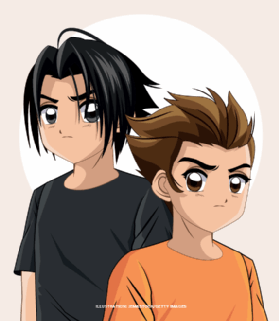anime
What is anime?
Anime, pronounced AH-nee-may, is a style of Japanese animated entertainment that has become increasingly popular around the world in recent years.
The word anime is a shortened form of the Japanese word animēshon, which means "animation." While anime has its roots in Japan, it has since spread to other countries, and today, anime can be found in many different languages, including English.
History of anime
Anime has a long history in Japan, dating back to the early 20th century. The first known anime was released in 1917, and since then, the medium has grown to become a major form of entertainment in Japan and around the world.

During the 1960s, anime began to gain popularity in Japan, and soon after, anime spread to other countries. In the 1980s, anime began to gain popularity in the United States, and by the 1990s, it had become a mainstream form of entertainment.
Today, anime is enjoyed by people of all ages and backgrounds.
Styles of anime
Anime is known for its distinct style, which is characterized by colorful, detailed animation and unique character designs. However, anime can be broken down into several different categories, including shōnen, shōjo and seinen.
Shōnen anime is aimed at young boys and features action, adventure and comedy. Examples of shōnen anime include Naruto, Dragon Ball Z and One Piece.
Shōjo anime is aimed at young girls and features romance, drama and comedy. Examples of shōjo anime include Fruits Basket, Sailor Moon and Ouran High School Host Club.
Seinen anime is aimed at older audiences and features more mature themes, such as violence, sex and political themes. Examples of seinen anime include Berserk, Akira and Grave of the Fireflies.
Anime subculture
Anime has a large and dedicated fan base, often referred to as the anime subculture. This subculture is made up of fans who are passionate about anime and often participate in conventions, cosplay and fanfiction.

Conventions are events where anime fans can meet other fans, buy merchandise and watch anime. Cosplay is when fans dress up as their favorite anime characters. Fanfiction is when fans write their own stories featuring their favorite anime characters.
The anime subculture also has its own media, such as anime magazines and anime music videos.
More on the anime industry
The anime industry is a major part of the entertainment industry in Japan. There are many anime studios in Japan, such as Studio Ghibli, Kyoto Animation and Toei Animation. These studios produce anime for television and film, and many of them are also involved in the production of anime video games.
Anime is a major export for Japan, with many anime series and films being translated and released in other countries. In recent decades, anime has grown to become a billion-dollar industry.
With anime's increasing popularity and the growing anime industry, it's safe to say that anime will continue to be an important part of the entertainment industry.
See also: motion-controlled gaming, live action role-playing, in-app purchase, in real life and first-person view.
